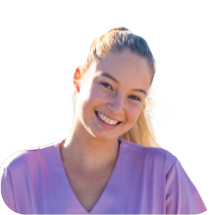Diabetes is a condition that can affect anyone at any age. This condition causes blood glucose levels to rise due to insufficient insulin production from the pancreas or the body’s inability to use insulin effectively. It is a chronic condition that one has to live with; however, there are treatment options available as well as non-pharmacological management options, such as lifestyle changes, that can help individuals manage diabetes.
If high blood glucose levels are left untreated, they can have severe repercussions on one’s health, causing slow healing of wounds, heart-related problems, and retinopathy. There are two main types of diabetes: diabetes mellitus type 1 and type 2. These conditions have different causes and treatment options.
Type 1 Diabetes
Type 1 diabetes is an autoimmune disorder that usually develops at an age younger than 15 years; however, there are cases where individuals of a higher age have developed type 1 diabetes.
The pancreas is the organ that secretes insulin, which is responsible for regulating blood glucose levels in the body. The pancreas contains beta cells that produce and secrete insulin. In type 1 diabetes, the autoimmune reaction causes antibodies to attack the healthy beta cells, leading to a decrease in insulin production. This can result in insufficient to no insulin production, causing dangerously high blood glucose levels. One is at higher risk of developing type 1 diabetes if a sibling or parent has the condition.
Type 1 diabetes can develop rapidly and might present with signs and symptoms such as frequent urination, extreme thirst, fatigue, glucose in the urine, recurrent yeast infections, sudden weight loss, and wounds that take longer to heal.
A significant complication to be aware of is that individuals with untreated type 1 diabetes can experience ketoacidosis. This occurs when there is insufficient insulin to lower blood glucose levels, causing the body to break down fat from adipose tissue for energy. The breakdown of fat releases ketones, which can make the blood’s pH levels acidic when present in excessive amounts. This condition usually presents with signs and symptoms such as nausea and vomiting, sweet-smelling breath, dry skin, and dry mouth.
Individuals with type 1 diabetes are treated with insulin, administered through subcutaneous injection. The use of insulin is most effective when a meal plan is developed for the patient, alongside close monitoring to ensure that insulin is working efficiently to lower blood glucose levels appropriately. In cases of ketoacidosis, treatment will involve insulin to reverse the effects of the condition, as well as the administration of electrolytes and appropriate fluids.
Type 2 Diabetes
Type 2 diabetes is a chronic condition that occurs when blood glucose levels remain consistently high. This typically results from poor lifestyle choices, such as following a Western diet high in processed meats, refined sugars, and calories, combined with insufficient physical activity. When one exercises, fats are released from fat stores, leading to increased energy availability and more capacity to store fat later. Poor lifestyle choices cause the beta cells in the pancreas to become overwhelmed, making it difficult to meet the high demand for insulin production.
One contributing factor to persistently high blood glucose levels is that when fat stores are saturated, they consistently release free fatty acids, which cause a background rise in blood glucose levels, even without food or drink consumption.
Type 2 diabetes is extremely common, with statistics from the World Health Organisation indicating that 530 million people globally suffer from the condition. While poor lifestyle choices are often the primary cause of type 2 diabetes, other contributing factors include genetics, a BMI of 25 or higher, hypertension, women with PCOS, and females who have had gestational diabetes during pregnancy.
Type 2 diabetes is usually diagnosed through a screening blood glucose test and a fasting plasma glucose test. If blood glucose levels are above a certain threshold after an 8-hour fast, this may indicate type 2 diabetes. Common signs and symptoms of this condition include extreme thirst and hunger, slow wound healing, blurred vision, frequent urination, numbness in hands and feet, and fatigue.
Treating type 2 diabetes involves a multidisciplinary approach. Non-pharmaceutical interventions include adopting healthy lifestyle choices, such as a balanced diet and regular exercise. Consulting a doctor for a referral to a dietitian or advice on exercise is advisable. Frequent monitoring of blood glucose levels is also essential. There are antidiabetic medications available in oral form to help manage blood glucose levels, as well as injectable options. In severe cases, insulin may be prescribed alongside oral medication to effectively manage blood glucose levels.










